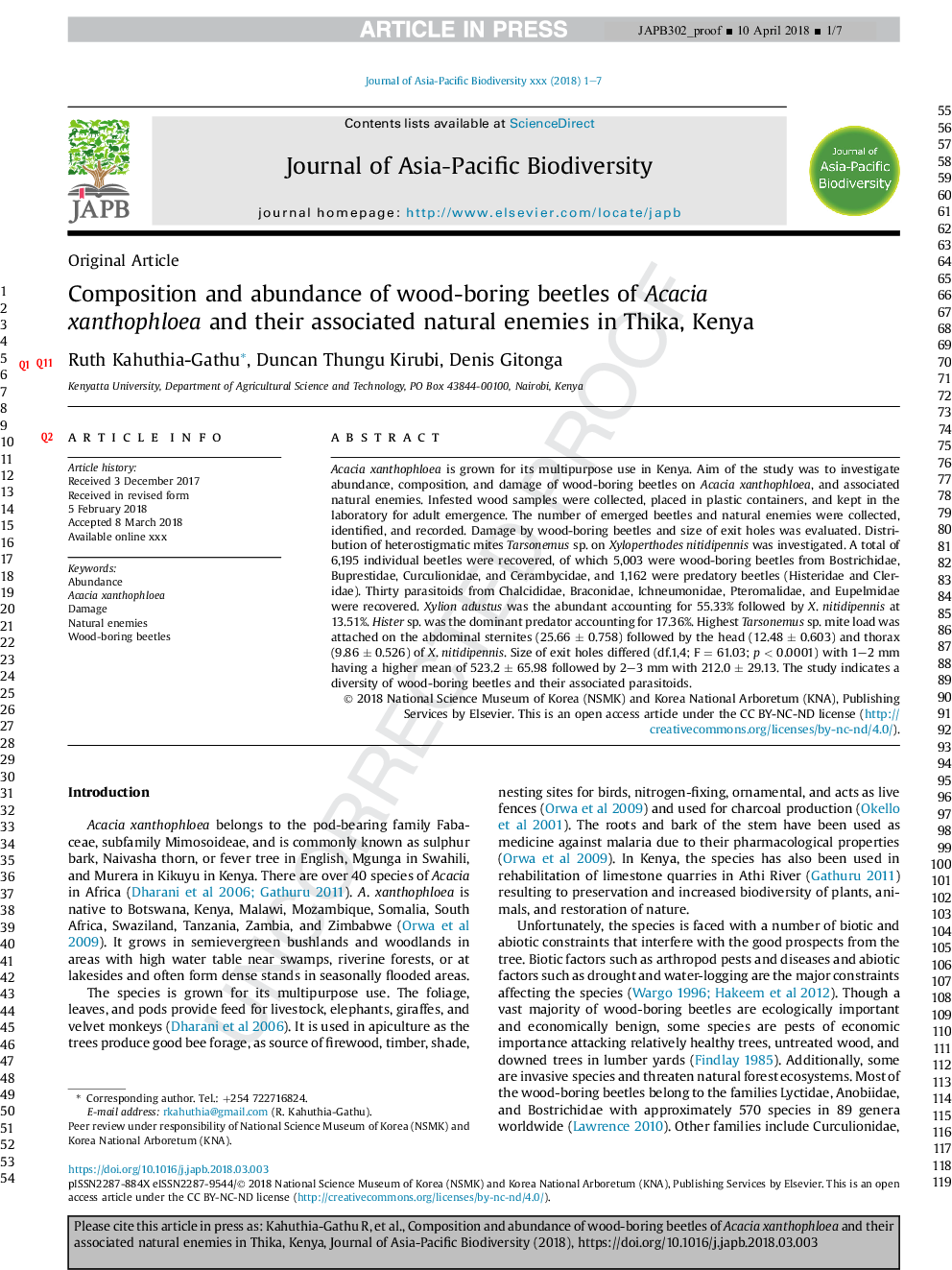| Article ID | Journal | Published Year | Pages | File Type |
|---|---|---|---|---|
| 8848637 | Journal of Asia-Pacific Biodiversity | 2018 | 7 Pages |
Abstract
Study was conducted on abundance, composition, and damage of wood-boring beetles on Acacia xanthophloea, and associated natural enemies. Infested wood samples were collected, placed in containers, and kept in the laboratory for emergence of beetles and natural enemies, which were identified and recorded. Distribution of heterostigmatic mites Tarsonemus sp. on Xyloperthodes nitidipennis was investigated. A total of 5,003 wood-boring beetles (Bostrichidae, Buprestidae, Curculionidae, and Cerambycidae), 1,162 predatory beetles (Histeridae and Cleridae), and 30 parasitoids (Chalcididae, Braconidae, Ichneumonidae, Pteromalidae, and Eupelmidae) were recovered. Xylion adustus accounted for 55.33% followed by X. nitidipennis (13.51%). Hister sp. was the dominant predator accounting for 17.36%. Highest Tarsonemus sp. mite load on X. nitidipennis was recorded on the abdominal sternites (25.66 ) followed by head (12.48) and thorax (9.86). Size of exit holes differed (df.1,4; F = 61.03; p < 0.0001) with 1-2 mm having a higher mean (523.2) followed by 2-3 mm (212.0).
Keywords
Related Topics
Life Sciences
Agricultural and Biological Sciences
Ecology, Evolution, Behavior and Systematics
Authors
Ruth Kahuthia-Gathu, Duncan Thungu Kirubi, Denis Gitonga,
